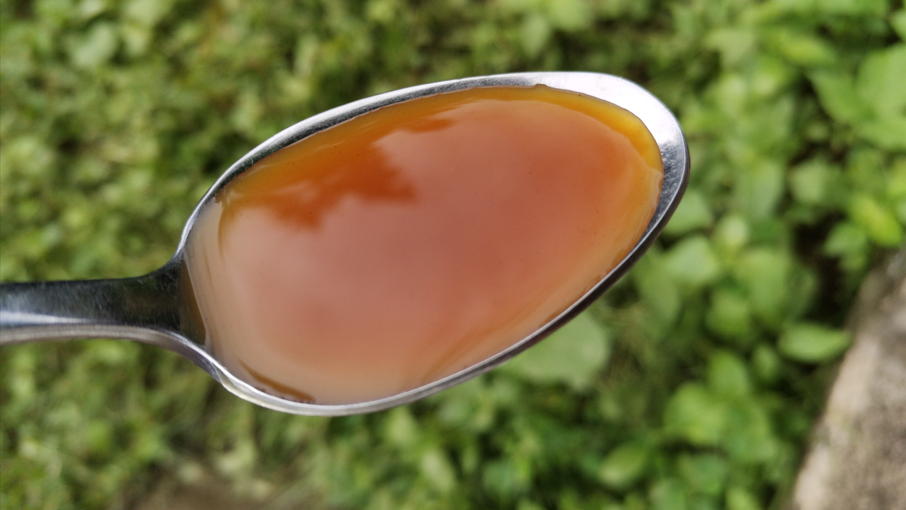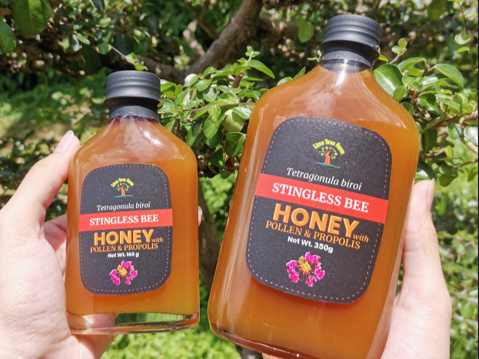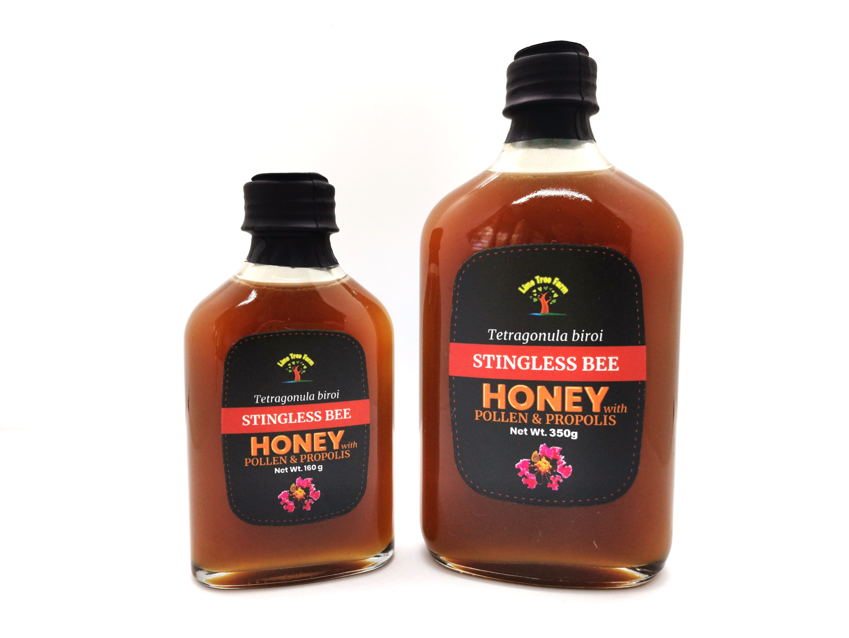
Lime Tree Farm Solutions

Lime Tree Farm Solutions

Whenever we tell people about our product, Lime Tree Farm Stingless Bee Honey, we are often met with confused stares. Common reactions include:
“What is stingless bee honey?”
“What does it taste like?”
“What are stingless bees?” and
“What do they look like?”
It’s unfortunate that so many people are unfamiliar with this exceptional honey because we think they’re missing out on an amazing product that not only tastes great but is packed with medicinal and health benefits, too. As regular users of stingless bee honey, we believe it comes really close to being the perfect food, and along with stingless bee propolis, it is an essential and incredibly effective part of our daily immune-boosting routine. To spread the word about how wonderful stingless bee honey harvested from Tetragonula biroi or Philippine stingless bees is, we have decided to write this blog post, highlighting its origins, unique taste, and health benefits backed by scientific research.

Stingless bee honey, harvested from Tetragonula biroi, is a unique and rare type of honey produced by stingless bees native to the Philippines. Known locally as kiyot or lukot honey, it is highly prized for its distinct flavor and potent health benefits.
Unlike its traditional counterpart, stingless bee honey has a unique sweet and tangy flavor with a slightly sour undertone, making it a delightful treat on its own or added to various dishes and beverages.
Compared to regular honey, stingless bee honey also tends to be less viscous and darker in color, which ranges from light amber to dark brown, often with a slightly cloudy appearance due to its natural production process and high pollen content. The color usually depends on the floral sources available to the bees.
The sourness in stingless bee honey is attributed to several factors, including its higher moisture content compared to traditional honey, natural fermentation, pollen and nectar sources, and enzyme activity.
According to research, the moisture content in stingless bee honey can range between 25% to 35%, while traditional honey usually contains about 17% to 20% moisture. This contributes to a faster fermentation process, which is a key factor in developing the sour taste.
The fermentation process in stingless bee honey is also driven by the presence of various yeast and bacteria that naturally occur in the hive and the honey itself. This fermentation leads to the production of organic acids, such as gluconic acid and acetic acid, which are primarily responsible for the tangy and slightly sour flavor. In addition to enhancing the honey’s unique taste, the fermentation also contributes to its health benefits, such as improved digestive properties.
The specific plants and flowers that stingless bees forage on can influence the flavor of the honey as well. Stingless bees often collect nectar from a diverse range of tropical plants, which can have varying acid content. The nectar composition from different floral sources can introduce natural acidity into the honey, further contributing to its sour notes.
Furthermore, enzymes present in stingless bee honey, such as glucose oxidase, play a role in breaking down glucose into gluconic acid and hydrogen peroxide. The production of gluconic acid, in particular, enhances the honey’s acidity and gives it a distinctive tangy taste.

Another common question we get asked is “What are stingless bees?” Scientifically known as Tetragonula biroi, these are tiny bees that are unique due to their lack of a stinger, which makes them relatively harmless to humans and intriguing to many (they can still bite with their jaws, though).
Stingless bees are commonly found in the tropical regions of the Philippines, where they nest in tree trunks and cavities. They produce honey as well as propolis, both valued for their health benefits, but beyond that, stingless bees play a vital role in pollination, supporting local ecosystems and agriculture. Their relatively gentle nature and beneficial products make them ideal for sustainable beekeeping and a fascinating and valuable part of biodiversity.
As regular users, we know firsthand how beneficial stingless bee honey is for our health. But we aren’t just making claims because these benefits are backed by scientific studies. Researchers have delved into the composition and effects of stingless bee honey, uncovering its powerful properties that make it a true natural remedy.
Philippine stingless bee honey, specifically from species like Tetragonula biroi, has been the focus of several scientific studies that highlight these impressive medicinal and health benefits. These include its antioxidant properties, antimicrobial activity, anti-inflammatory effects, nutritional content, glycemic index, and wound-healing properties.
Researchers have discovered that honey from Philippine stingless bees is rich in antioxidants like flavonoids and phenolic acids. These compounds are known for their ability to neutralize free radicals, thereby reducing oxidative stress and potentially lowering the risk of chronic diseases.
The antimicrobial properties of stingless bee honey are another well-documented benefit. Research has revealed that this honey exhibits strong antimicrobial activity against various bacterial strains, including Staphylococcus aureus and Escherichia coli. This suggests that stingless bee honey can be a potent natural antimicrobial agent, potentially useful in treating infections and preventing the growth of harmful bacteria.
Stingless bee honey also shows significant anti-inflammatory properties. Research has found that it can help reduce inflammation by inhibiting the production of pro-inflammatory cytokines. This makes it beneficial for managing inflammatory conditions and promoting overall health.
In addition to its therapeutic properties, stingless bee honey is nutritionally rich. According to research, it contains essential vitamins and minerals, including vitamin C, B vitamins, calcium, and potassium. These nutrients are vital for maintaining good health, supporting metabolic functions, and boosting overall vitality.
One of the unique aspects of stingless bee honey is its low glycemic index, which is particularly beneficial for individuals managing diabetes. Studies have shown that this honey causes a slower and lower rise in blood sugar levels compared to other sweeteners. This makes it a suitable alternative for people with diabetes, allowing them to enjoy a sweet treat without significant spikes in blood glucose levels.
Finally, stingless bee honey has demonstrated remarkable wound-healing properties. Research has revealed that it can promote faster tissue regeneration and reduce infection rates in wounds. Its antimicrobial and anti-inflammatory properties are key factors that contribute to its effectiveness in wound care, making it a valuable natural remedy for cuts, burns, and other skin injuries.

As you can see, stingless bee honey from Tetragonula biroi or Philippine stingless bees is a remarkable product that combines a delightful flavor with impressive health benefits. It is a powerful and natural option for enhancing overall health and well-being, and incorporating it into your diet and wellness routine can provide numerous benefits, from boosting immunity to managing blood sugar levels and promoting faster healing.
If you’re ready to experience the unique taste and medicinal properties of stingless bee honey, look no further than Lime Tree Farm. Our honey is available on Shopee and Lazada.